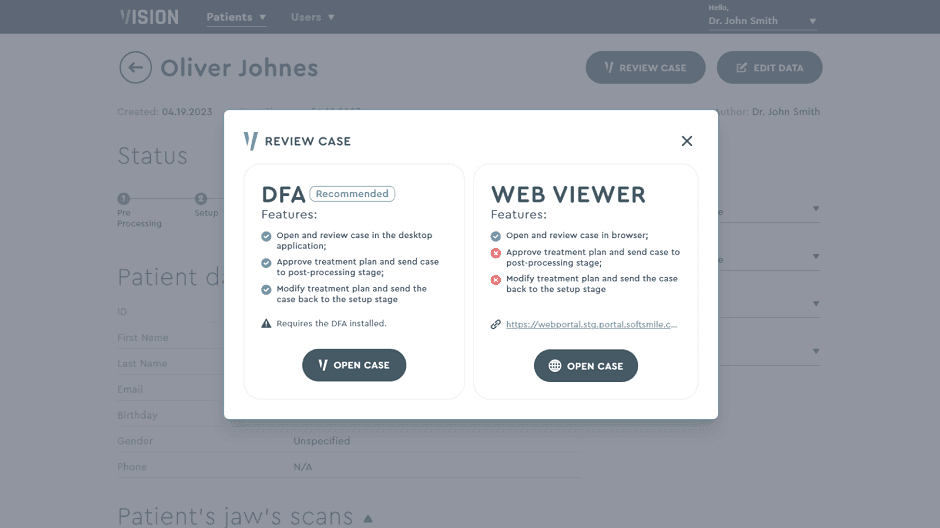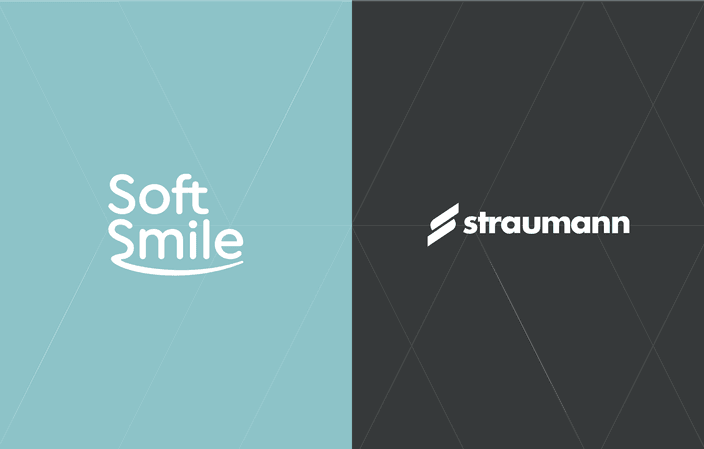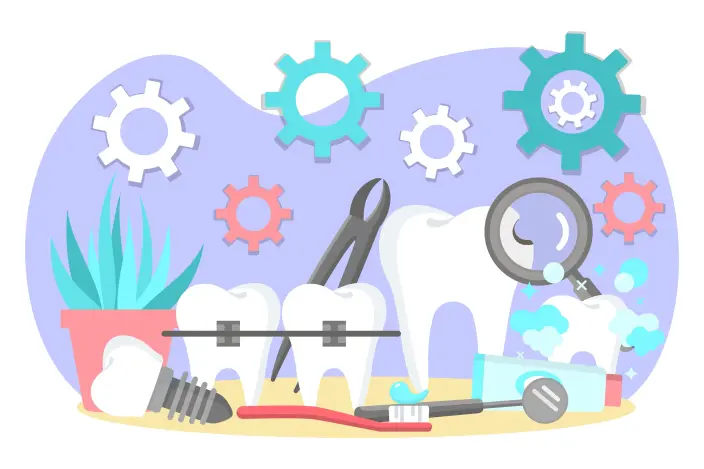May 14, 2023
New from SoftSmile: VISION Web Portal

SoftSmile is proud to announce the launch of the VISION Web Portal, an interactive case management system designed to help doctors and manufacturers holistically generate and oversee clear aligner patient cases all in one place.
he web portal has been designed specifically for orthodontic practices, with the goal of increasing the efficiency of case management, treatment planning, and clear aligner therapy. VISION Web Portal is cloud-based which makes it possible to access a patient case from anywhere in the world. The flexibility and ease of use of the portal allow it to meet the needs of small enterprises, as well as individual doctors, and makes the switch to VISION seamless for providers of all sizes.
The new web portal offers a number of key benefits including:
- 360-degree project management: The comprehensive system streamlines the complexities of each patient case from pre-processing to final export. Doctors and manufacturers have full control over workflows with the ability to assign personnel different roles, permissions, and tasks. A bird's eye view status bar for every case allows users to quickly check the progress of treatment plans.
- A streamlined workflow saves time: The portal automates workflows and increases collaboration among technicians and doctors with step-by-step guidance, notifying users when one phase is completed and is ready for the next. This automation reduces time spent on treatment planning that doctors can now reinvest in quality time with patients, enhancing care and improving treatment outcomes.
- Fully customizable and flexible: The portal eliminates repeat manual input with the option to save treatment preferences and company protocols. When technicians receive a case they know exactly how to set up the treatment plan based on the doctor's directive. The VISION Web Portal is user-friendly, with no special skills or knowledge required to use it. It is also flexible and can plug into any existing workflow as needed.
- Increased patient visibility: Patients can view their treatment plan, including before-and-after images, to better understand their treatment process and visualize the results. The best-in-class web viewer, designed so that doctors could share the treatment plan strategy with patients and colleagues, is integrated into the Web Portal. This shall increase patient engagement and satisfaction.
- Intuitive UX/UI: The portal is designed to be as user-friendly as possible, with UI and UX best practices implemented by our designers. There is no installation required, and no special skills or knowledge are needed to use it. Once registered, users can begin using it to manage their patients' treatment plans. Additionally, we will have supportive materials available on our YouTube channel, including videos, to help users get started.
If you are interested in learning more about VISION Web Portal, please visit our interactive demo site or request a demo.



